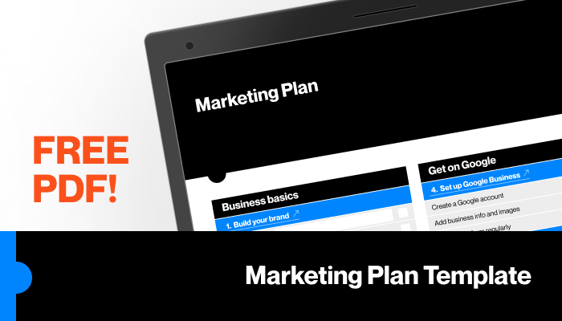6 Key Elements for Building a Strong Client-Contractor Relationship
by Team Tradify, March 31, 2022
Strong client-contractor relationships are a must for successful tradespeople. They help to generate repeat business, word of mouth, and great reviews — everything you need to keep a steady stream of jobs headed your way.
 We’ve made a list of six key elements that go a long way to building valuable client-contractor relationships:
We’ve made a list of six key elements that go a long way to building valuable client-contractor relationships:
1. Honesty is the best policy
2. Provide details
3. Enforce solid contracts
4. Work together
5. Encourage communication
6. Embrace technology
7. Client-contractor relationships that last

1. Honesty is the best policy
Any strong relationship starts with honesty and trust. Never mislead or lie to your clients, and if you need to deliver bad news, be upfront and transparent about the issue. Your clients will value your honesty and can help you to find a resolution if they know the truth from the get-go.
It’s a good idea to be clear with your clients about what a typical working day looks like for you. Start and finish times, potential noise levels, and the experience level of your staff are good places to start.
Take time to discuss your client’s ground rules if they have any. If you think that these rules are unrealistic, or you may find it hard to follow them, let them know early on so that you can come to a compromise together.
2. Provide details
While you may be an expert in your field, it’s likely that your client isn’t. Take the time to break down the details of the job and provide further explanation if needed. It’s always better to spend a bit more time going over the facts of the job, than to re-do a job because your client wasn’t clear on what you’d agreed on.
It’s a good idea to confirm any important details that you and the client have agreed on in writing. This way, if there’s any confusion about what was said, you’ve got something to refer to and send back to the client.
Take time to explain how you will protect the property you’re working on, such as:
- How you will protect items of furniture and surfaces.
- Whether you will wear shoe coverings.
- If any household items should be moved during the project.
- Closing and locking external doors upon entering and leaving the property.
This will go a long way in showing your client that you care about their property. It may seem simple, but it’s a small detail that many tradespeople miss, so it’s a great way to stand out from the crowd.

3. Enforce solid contracts
A solid contract that details the roles and responsibilities of everyone involved in a project forms the basis of a good working relationship. One of the essential things to consider when you first set up a trade business is to draft contract agreements for your work.
A solid contract should include:
- Detailed scope of work: expectations, time-frames, and list of tasks.
- The tradesperson’s responsibilities: things like tool stowage and clearing up after work is completed at the end of the day.
- The client’s responsibilities: does your client need to provide access to their property at specific times? Do certain facilities need to be made available? Whose responsibility is it to move furniture before the project starts?
- The total, final price of the work: have you provided a quote and does the client agree with your pricing?
- Compliance requirements: planning, building regulations, party walls, utility companies.
- Schedule of payments: will the materials be paid for in advance? How and when will the final bill be paid? Do you take an initial deposit before project commencement? Agree on how much is to be paid and when, and lay it out clearly in the contract.
- Disputes: explain how disputes are typically resolved.
Even if you’re just completing a small job for a homeowner, a written contract sets out the boundaries for the project and can diffuse any potential disputes later on down the line. Make sure you spend time going through the contract with the client — that way you can make adaptations as needed and ensure that everyone’s satisfied with what’s being agreed upon.
4. Work together
Working together with your client on a project is beneficial for both parties. The key thing here is to understand precisely what your client’s needs are so that you can deliver them to the best of your ability. Ask your client plenty of questions and know what their project pain points are. Having upfront conversations like this will avoid problems later down the line and demonstrate your trustworthiness.
To make sure that you and your client are on the same page, create a list of questions to ask your client to manage expectations. Some general ideas for questions include:
- Can you tell me about your budget for this project?
- What would be the best results you would like to see?
- Are you looking for an estimate or a fixed price for this project?
- What worries you the most about this project?
- What are your expectations regarding communication and progress updates?
- What areas of your home can we not touch or enter?
- When are you looking to start this project and when is your ideal completion date?
- Are there any key milestones, important dates, or time constraints to be aware of?
- Are there any other contractors involved with this project?
5. Encourage communication
Regular communication throughout the duration of a project delivers reassurance to your clients. Establish who your main point of contact is and work out their communication style. While some clients may want to be kept up-to-date with everything going on on-site, others may be happy for you to do your thing and simply make contact when certain jobs have been completed.
Miscommunications can be the source of many disputes. What starts as a simple misunderstanding can escalate to bigger problems down the line and have the potential to damage your reputation.
Always keep the path of communication open and encourage questions from your clients. Willingness to demonstrate the project’s progress offers peace of mind and forges strong client-contractor relationships.

6. Embrace technology
Using the right technology can boost your client-contractor relationships in many ways. Chances are, like most busy tradespeople, you can’t find enough hours in the day to deal with all the other aspects of your business like finances and payments.
Some benefits of using technology include:
- Making communication simpler.
- Planning jobs quickly.
- Simplifying the payment process.
- Raising invoices with ease.
- Providing accurate estimates.
- Creating project visuals.
- Securing future jobs
Modern tech can be confusing, but it’s important that you don’t find yourself falling behind. Explore whether job management software like Tradify, which handles enquiries, quoting, and invoicing, is suitable for your business. Tracking your jobs with pen and paper might be fine at the start of project conversations, but at some point, you’ll need to keep things a lot more organised — clients will expect this of you — it’ll help to deliver the project on budget, on time, and to their satisfaction.
7. Client-contractor relationships that last
Without heading down the live chat software route, there are other ways to provide exceptional customer service and stay ahead of your competitors.
Building strong client-contractor relationships is not hard to achieve with the right mindset. By encouraging two-way conversations where possible, and being honest about deadlines and project progress, you’ll foster a transparent partnership with your clients to create an excellent service.
To get a headstart on building a strong business, try Tradify free for 14 days. No credit card required. No pressure. Or pop into one of our live demo webinars to see the app in action.
This is a guest article written by Patty Yan, the EMEA Product Marketing Manager for RingCentral Office, the leader in cloud communications solutions.
